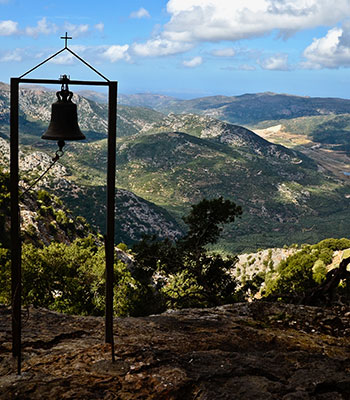 Architecture: rock-hewn cave
Architecture: rock-hewn cave
Dating: since 1979 it has been functioning as a church
Location: Avdou (South of the village)
Celebration: 4th Sunday after Easter
Hagiography: NO
Access: Difficult. There is access only from a country road, followed by a steep path up to the cave.
Visit Options: Open
The Cave of Agia Fotini is located 7 kms south of Avdou village. According to Christian Orthodox Church archives, this cave was opened by the Virgin Mary herself in order for Agia Fotini to have an isolated retreat, enabling her to devote to God. As she could not find such a place, Virgin Mary appeared and performed a miracle: she created a cave in the rocks, where St. Fotini could live. Tradition also states that women, who cannot bear children, come to the cave, pray, drink the holy water dripping from the roof, become pregnant and always give birth to boys.
This cave has a length of 44 m, width of 1.8-7.5 m and height of 5.3 - 20 m, however the total length of its corridors, reaches a total expanse of 700 m.
According to P. Faure, the worship in the Agia Fotini Cave began in the 19th century. It is believed that in the late 19th century there was a monk living there. The cave of St. Fotini was famous as a hide-out during the Cretan Revolutions. The total length of its paths is about 700 meters, something that is unknown to most visitors. At the entrance, which is on the northwest side, there is a shrine. There is the beginning of a narrow path that used to be an old riverbed, leading to the last chamber of the cave, which is used as a church dedicated to St. Fotini.
At the edge of the chamber there is a stone staircase with 6 steps and two stalagmites, which the locals call “the knees of St. Fotini”. At the other edge of the chamber there is a small room that serves as a sanctuary and above that, there is the “anogeion” (an upper storey), where the locals used to hide their valuables during the Ottoman Rule. In the last chamber, water dripping from the roof is gathered in a pot, as it is thought to be holy water.